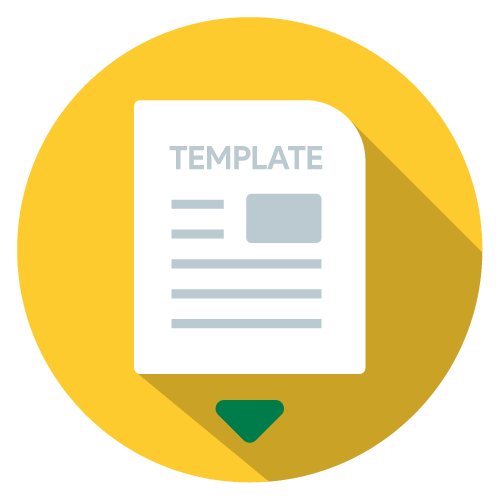Did you know that over one-third of invoices are paid late? Unfortunately, there are many reasons you might have to chase a late payment, such as:
- Lost invoices.
- Limited payment options.
- Poor budget-setting.
The good news is that setting clear invoice payment terms can help you get paid faster. In this guide, you’ll learn how to control your cash flow better and get paid on time by incorporating clear payment terms in your invoices.
What are the payment terms on an invoice?
Invoice payment terms outline when and how you want to be paid. These typically include a detailed description of your arrangement, including:
- Your preferred payment method (i.e., credit card, payment portal, or cash on delivery).
- Late payment fees and policies.
- Accepted currencies.
- Due dates.
Why are invoice payment terms important?
Payment terms keep customers accountable for what they owe you and ensure that your cash flow stays healthy. Here are a few other ways they can benefit business owners.
Control when you get paid
Payment terms tell your customers exactly when you expect to receive on-time payments. Ideally, they ensure that you get prompt payments without inconveniencing your customer. Most small businesses and freelancers enforce net-30 payments that are due 30 business days from the invoice date.
Make payment terms part of your contract
Including payment terms in your contract ensures that they are legally binding. If your customer fails to settle their unpaid invoice within the agreed period of time, you can take your customer to court. Discuss these terms with your customer before signing the contract to level expectations.
Predicting payment means healthier cash flow
Most freelancers and small business owners will often struggle with overdue payments. Fortunately, setting effective invoice payment terms and facilitating online payments can make it more convenient for your customer and ensure positive cash flow.
Knowing when you can expect a monthly payment also helps you budget and determine when you are most liquid.
How long should you give someone to pay an invoice?
Historically, net-30 is the most common payment term. These grace periods are popular because they allow businesses to run monthly checks and make income more predictable. However, several factors can impact the terms you ultimately set, such as:
- The scope of the project.
- The total invoice amount.
- Customer’s payment history.
For instance, for longer-term projects with a higher invoice amount, requesting a partial payment in two sums might be more convenient for you and your customer. Alternatively, you can settle for a longer payment period such as net-60 or net-90.
What are the best invoice payment terms for businesses?
Carefully set terms ensure faster payment. If an on-time payment is something you want to achieve, consider incorporating these terms into your invoice.
Shorter terms
While most standard payment terms enforce a payment period of 30 days, online payments have made it easier for customers to settle their bills. Take advantage of this by setting shorter terms between 15 and 30 days.
Late payment policy
Enforcing a late fee penalty encourages customers to make their payment in advance or at least on time. However, be sure to discuss your overdue invoice policy beforehand, including details in the final contract.
Most freelancers and small businesses set a late fee interest rate of between 1% and 1.5%.
Several methods of payment
Having more than one payment method makes it easier for your customer to pay and increases your chances of them settling an invoice on time. If you only accept credit card payments, you might want to consider introducing more options like:
- Money order.
- Check.
- Debit card.
- Cash.
- Payment portals.
- Bank transfers.
You can also consider allowing customers to set up an automatic monthly credit payment every time you send invoice balances.
Incentivized early payment
Offering payment discounts to customers who settle their bills early can incentivize them to always be on time. Most businesses offer a 2% discount for customers who pay within ten days of receiving their invoice.
How to choose invoice payment terms for your business
To avoid payment delay and encourage your customers to settle their invoices on time, setting the right terms matters. Here are some best practices to keep in mind.
Cash flow considerations
While you want to carefully consider your customers’ needs when setting your expectations for payment, you also have to prioritize cash flow. Set payment schedules that keep your cash flow steady and predictable while keeping things manageable for your customers.
Industry considerations
Terms for payments will vary depending on the industry. For instance, while most industries will adhere to a net-30 standard, the construction industry is more used to a net-90 cash basis. On the other hand, most landscapers send net-7 invoices. While not as common, there is also a billing option for 21 days.
Customer history
If you provide ongoing services to a specific customer, you can set invoice payment terms according to their payment habits. For instance, if they tend to incur an outstanding balance frequently, you might want to consider setting shorter deadlines or request a down payment.
However, more complex projects might make it difficult to allow shorter payment terms, so you’ll want to consider making a payment request for milestones instead.
Size of the invoice
The larger the invoice, the more time your customer should have to make up the funds to pay you. If working on a big project with a new customer, consider asking for an upfront deposit to avoid non-payment.
What to include in your invoice payment terms
The payment terms you set and how you iterate them will influence how quickly you get paid. So, what should you include in your contract? Let’s take a look.
Invoice due date
Other than the invoice amount, the most important piece of information to include in your contract is the due date. There are two ways to outline a due date:
- Provide a specific due date, which is the day you expect to receive the payment.
- Provide a net date, which is how many days your customer has to pay upon receiving the invoice balances.
Terms of sale (TOS)
The terms of sale (TOS) between buyers and sellers typically include the following:
- Chosen payment method.
- Cost per product or service.
- Invoice amount.
- Invoice date payment or net due date.
Sales tax
Depending on where you supply your customers, expect to fulfill Federal Goods and Service Tax (GST). Here is a list of sales taxes according to your Canadian province or territory.
- Harmonized Sales Tax (HST): Ontario, Nova Scotia, New Brunswick, Labrador, Newfoundland, and Prince Edward Island.
- Provincial Sales Tax (PST): Manitoba, British Columbia, and Saskatchewan.
- Quebec Sales Tax (QST): Only in Quebec.
Currency
If you offer your products and services to international customers, you’ll have to agree on a currency to transact with. Accounting software like QuickBooks Online provides multi-currency support that automatically reflects exchange rates.
Recurring payments if ongoing
If your business provides subscription-based products or services, recurring methods of payment can make it easier for customers to settle individual invoices.
Improving your invoice payment terms
As your business operations change, so will your professional invoices. When reviewing your invoice templates, make sure to apply the following tips:
Keep them short and concise
Especially if you accept various methods of payment, keeping the language on your invoices simple can make things clear and prevent miscommunications.
Send your payment request on time
Do you want to process payment right away? Send your invoice as soon as possible so your customer doesn’t forget to settle.
Say please and thank you
While it may seem obvious, using polite and professional language can help you avoid a payment delay. Customers love to feel appreciated and valued — playing to this will get you paid faster.
Be realistic and flexible
Like any business owner, you probably want to get paid as soon as you close up a project. However, circumstances may not always be ideal and you don’t want to put unnecessary pressure on your customer. So, be realistic and make it easy for customers to pay you by offering more than one efficient payment option.
If you offer limited methods of payment, consider introducing something new like bank payments, mobile payments, or credit card payments if these aren’t already on your roster.
What payment methods should you accept?
One of the easiest ways to make accurate cash flow projections and get paid on a regular basis is to offer more than one collection method. Some commonly accepted payment methods include:
- Credit cards.
- Cash.
- Third-party online banking service.
- PayPal or Stripe.
- Check or money order.
- Bitcoin or other cryptocurrency.
- Payment via mobile device.
Download your invoicing email templates for free
Unsure of how to word your payment follow-up email?
Use these free email templates to send invoice follow-ups and payment requests to your customers.
If you don’t see the download form, download template here.

Invoice payment terms: Key takeaways
Deciding on your payment settings can spell the difference between receiving your pay on time or having to chase down customers with a follow-up payment request.
While there are many ways to get your scheduled payment on time, incorporating clear payment terms and more than one collection method can help your cash flow tremendously.
Are you looking for a better way to organize your accounting records and individual invoices? Method is the software for accounting professionals that keeps your invoice payments on track!
Set clear invoice payment terms with Method CRM. Start your free trial today!
Image credit: Ivan Samkov from Pexels






